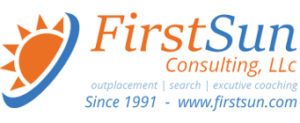Your #Career : This Is How To Conquer Even The Most Hardcore #Networking Anxiety…Having #SocialAnxiety isn’t the Same as just Being a Natural #Introvert, which Means there are Steps you can Take to Mitigate It.
As an anxious person, there are few things I dread more than large, unstructured networking events. Hell is nothing if not balancing a plate of hors d’oeuvres while desperately scanning the room for a kindly looking duo or trio who might welcome me into their conversation.
Despite fearing these situations, I know they’re an important part of growing a career. Yet when I force myself to network, I often find myself spiraling through escalating negativity that usually goes something like this:
Oh, there’s that woman I met before. I should go say hi to her. Wait, what if she doesn’t remember me? She probably doesn’t want to talk to me anyway. Oh God, I’m just standing here now. Everyone can see how awkward I am! GO TALK TO SOMEONE! TALK TO ANYONE, YOU CRAZY WEIRDO!
Then I sweat through another 15 minutes of psychological distress before treating myself to a nice break of hiding in the bathroom.
The truth is, almost everybody experiences some level of anxiety in different social situations, and you can absolutely be anxious and still make positive connections at networking events. It just might take a bit more focus and patience than it does for the naturally extroverted schmoozers and hand-shakers out there.
Related: How I Learned To Stop Hating Networking Events (Mostly)
GET TO KNOW YOUR ANXIETY
While many introverts are also socially anxious, having social anxiety isn’t the same as just being being introverted or shy–it’s not a personality thing. “It’s a specific fear about being negatively evaluated by other people,” psychotherapist Noah Clyman, director of NYC Cognitive Therapy, explains.
This fear is usually linked to negative beliefs that the sufferer has about himself or herself, like, “I’m a failure,” or “I’m incompetent,” or “I’m stupid.” It’s totally human to think self-deprecating thoughts occasionally, but for folks with social anxiety, these aren’t rare instances of self-criticism but deeply ingrained thought patterns. As a result, social interactions foment the concern that others will see them in the same negative way they perceive themselves–often leading social anxiety sufferers to avoid those encounters or approach them with fear and trembling.
Ironically, since a key trait of social anxiety is being hyper-conscious about others’ experiences, anxious folks tend to have little to worry about in reality. Clyman says that people with social anxiety typically “have pretty good skills socially, and they just get in their own way because they’re thinking too much.”
Still, I know firsthand that it’s pretty much useless to tell someone with anxiety not to worry. (Do birds not fly? Do fish not swim?) Thankfully, there are several evidence-based techniques for reducing the power of self-critical thoughts. I explored many of them in a recent episode of Group, the podcast I host about mental health and mental illness, but here are a handful to get you started.
Related: How I Realized My Social Anxiety Was A Hidden Career Asset
Like this Article ? Share It ! You now can easily enjoy/follow/share Today our Award Winning Articles/Blogs with Now Over 2.5 Million Growing Participates Worldwide in our various Social Media formats below:
FSC LinkedIn Network: www.linkedin.com/in/fscnetwork
Facebook: http://www.facebook.com/pages/First-Sun-Consulting-LLC-Outplacement-Services/213542315355343?sk=wall
Google+: https://plus.google.com/115673713231115398101/posts?hl=en
Twitter: Follow us @ firstsunllc
Question: Want the ‘the best/current articles/blogs on the web’ on Job Search, Resume, Advancing/Changing your Career, or simply Managing People?
Answer: Simply go to our FSC Career Blog below & type(#career, #leadership, #life) in Blog Search: https://www.firstsun.com/fsc-career-blog/
What Skill Sets do You have to be ‘Sharpened’ ?
Continue of article:
FACE YOUR FEARS BIT BY BIT (IN A CONTROLLED SETTING)
Claire Eastham, author of We’re All Mad Here: The No-Nonsense Guide to Living with Social Anxiety, credits so-called “exposure therapy” as one of the treatment forms that “really, really works” for her. It’s exactly what it sounds like. “You kind of expose yourself to something that makes you uncomfortable a little bit at a time, which is difficult, because it’s the last thing that you want to do,” Eastham explains. “It seems absurd to put yourself in a situation that makes you feel afraid, but it kind of gave me back that ground, that control, that territory.”
In his practice, Clyman’s method of exposure therapy often involves filming a patient (with their consent) doing whatever it is that makes them anxious. For someone with my neuroses, he might record us simulating small talk together at a pretend networking event. Before watching the video, Clyman will ask his patients to rate how they believe they presented themselves.
Then, he says, “we’ll watch it back, and what people see is that they come across much better than they think they actually do.” Acknowledging this contrast between a self-critical perception and the much milder reality makes it easier for anxious folks to challenge their negative thinking–including in interactions outsideof the safety of their therapists’ offices.
Eastham admits she often obsesses over the idea that she’s “ruined her life” after certain social encounters. “When in reality,” she says, “when you have a look at what you did, and how you behaved to an outsider, I mean, those people, they won’t remember it!”
Related: This Silicon Valley Therapist’s Tips For Coping With Startup Stress
CATCH YOURSELF COMMITTING A “THOUGHT ERROR”
When that negative inner monologue starts rolling, self-critical thoughts and ideas pop into your head. Therapists call these “automatic thoughts” and tend to pair exposure therapy with “cognitive behavioral therapy,” a series of habits for identifying and challenging those automatic thoughts with more balanced appraisals.
“Often these thoughts are really exaggerated in a negative direction,” Clyman says, “so that the person is making some kind of error or errors in their thinking.” One common “thought error” that socially anxious folks fall tend to make is “catastrophizing,” or imagining the worst-case scenario when other scenarios are actually more likely. A therapist like Clyman might work with a patient to think through many possible scenarios, maybe even writing them out.
One automatic thought I often have at networking events is a version of “everyone thinks I’m awkward.” If I catch myself thinking that, then use it as a cue to step back and mentally examine other possible scenarios, I’m usually forced to admit that it’s unlikely everyone is thinking about how weird I am. Chances are they’re just as fixated on their own experiences, and probably aren’t observing me critically at all.
PRACTICE MINDFULNESS
When I’m feeling anxious during a networking event, I’m hyper-conscious of how I’m standing, the way I’m speaking, and the general way I’m presenting myself. The problem, says Clyman, is that “when people are focused on themselves, they don’t have the opportunity to observe whether others are actually looking at them in a judgmental way.” Mindfulness exercises can break this self-focus just enough to gain a more objective sense of the situation.
Personally, I’ve found that meditation apps like Headspace useful for training myself how to get out of my own head and be more present. When I practice mindfulness regularly in situations that feel “safe” (when I’m spending time alone, or with close friends), I’m better able to remain calm and present in nervier environments, too–like when I speak with industry professionals at networking events.
NOW ABOUT THOSE SWEATY PALMS . . .
Social anxiety can also bring physical symptoms: a pounding heart, blushing, shaking, breathlessness. Eastham, for example, has a hand tremor that becomes evident when her anxiety is especially intense. Eastham has found that beta blockers, which are typically used to treat high blood pressure and migraines “help take the edge off” if those physical symptoms become unbearable. They can only be prescribed by a doctor and won’t treat the psychological experience of anxiety, but it maybe worth asking your healthcare provider if it’s an option you should consider.
The technique of “scripting” can also help you get through a networking event: “Spend some time planning how you would like it to go,” says Clyman. “Write down: What are three things that I could say about myself, or what are three things I could ask the person about themselves?” However, he cautions, once you finish that activity, make sure to move on. It’s easy to obsess or ruminate over how you want a situation to go, and spending hours mapping a hypothetical conversation isn’t going to be beneficial for your mental health–or your career.
Rebecca Lee Douglas is a multimedia producer and the host of Group, a lighthearted podcast about mental health and mental illness. You can follow her on Twitter at @RebeccaLDouglas and subscribe to Group on Apple Podcasts, Stitcher, or wherever you download your podcasts.
FastCompany.com | January 11, 2018 | BY REBECCA LEE DOUGLAS























